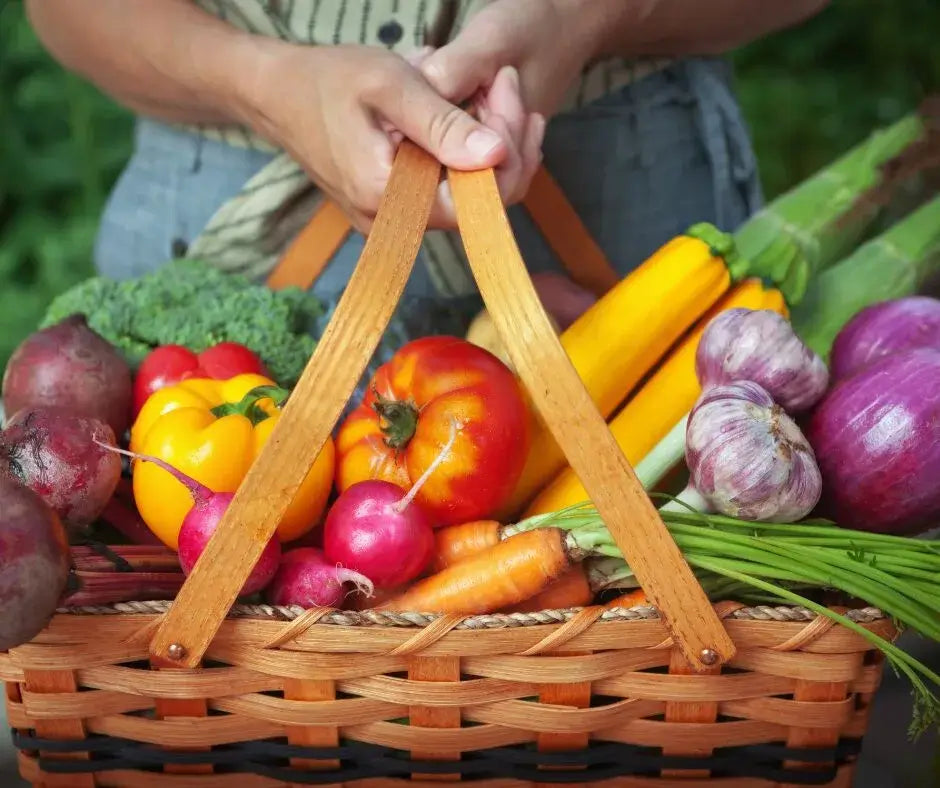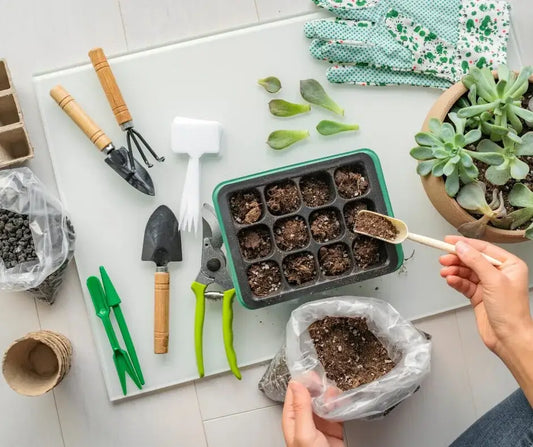Is there anything more gratifying and delectable than cultivating your own produce? Productive plants offer a profound sense of achievement and the joy of savoring fresh, delightful meals. However, to achieve such a remarkable harvest, it's crucial to determine the optimal layout for your vegetable garden based on your available space and desired plants. Let’s Get Growing.
Choose Your Site
Begin by assessing your potential growing area, considering the following factors:
- Determine the sunniest spots, as many vegetables thrive on 6 to 8 hours of sunlight daily. Note that the south, east, and west sides of your residence receive more sunlight than the north.
- Opt for a location near your house for convenience. Placing the vegetable garden close to an entrance ensures frequent visibility, making it easier to notice when watering or pest control is necessary.

- Evaluate existing vegetation around the area. A surplus of shrubs or trees can compete with your garden for nutrients, moisture, and sunlight. Avoid locations near walnut trees, as they produce toxins harmful to vegetable plants.
- Assess the proximity of a water source to ensure easy access, sparing you from lugging hoses or heavy watering cans across the yard.
- Determine the required space, starting modestly with a few raised beds or containers, and gradually expanding your vegetable garden plan each year.
List Your Preferences
Before purchasing plants, compile a list of your favorite vegetables. Whether you're a culinary enthusiast aiming for a variety of heirloom tomatoes or have specific dislikes such as collards, allocate space in your garden layout accordingly. Incorporate space-saving trellises for vining vegetables like cucumbers and peas, and if perennial plants like asparagus and strawberries are among your favorites, consider designating a permanent plot for them.

Plan on Paper
Using graph paper is a valuable tool when creating your vegetable garden layout. Follow these steps:
- Take a photo of your garden area and measure its approximate size.
- Use a ratio of 1 foot = 1 box on the graph paper to sketch the beds and containers, leaving ample space between them for a wheelbarrow.
- Limit the width of each vegetable bed to 3 to 4 feet, facilitating easy access for planting, weeding, and harvesting without compacting the soil by stepping on it. Planning on paper helps save time and prevent potential errors before breaking ground.
Add Your Plants
Incorporate the names of the plants you intend to cultivate into the vegetable garden planner, ensuring adequate spacing between each selection. When plants are tightly packed, they compete for nutrients, sunlight, and water, hindering their potential for robust growth. As a general guideline, position taller vegetables at the rear of the bed, medium-sized ones in the middle, and smaller plants at the front or as a border. Consider integrating pollinator plants to attract beneficial insects, contributing not only to an improved harvest but also to the suppression of garden pests. If this isn't your inaugural gardening venture, reflect on the locations of your vegetable plantings from the previous year. Ensure a rotation to different beds in the upcoming season, as this practice helps deter diseases and mitigates the risk of soil-residing pests that linger through the winter.

Companion Planting
A strategic and sustainable gardening practice that involves cultivating different plant species in proximity to enhance their mutual growth and deter pests. This method leverages the natural synergies between certain plants, where one species may provide benefits to its neighbors. For instance, some plants release compounds into the soil that repel specific pests or attract beneficial insects, contributing to a healthier and more balanced ecosystem within the garden. Additionally, companion planting can optimize space utilization by pairing plants with compatible growth habits. By carefully selecting plant combinations based on their complementary attributes, gardeners can foster a harmonious and thriving environment, promoting increased yields and reducing the need for synthetic pesticides or fertilizers.
Determining Your Garden Layout
A Four-Square Garden
Are you looking to optimize your vegetable garden space while ensuring healthy growth for your plants? Look no further than the classic Four-Square Vegetable Garden Layout Plan. This timeless method divides your garden into four sections, with each section dedicated to specific types of vegetables. The key to success with this layout is pairing vegetables that thrive together and have similar growing requirements. For instance, carrots can be paired with tomatoes, cauliflower with celery, and corn with potatoes. By carefully organizing your vegetable seeds before planting, you set the stage for a harmonious and productive garden.

One of the greatest benefits of this layout plan is its compatibility with crop rotation—a vital gardening tactic. With each new growing season, simply rotate your crops in a counterclockwise fashion, planting a different group of vegetables in each square. This simple practice not only maintains soil health but also naturally combats pests and diseases by disrupting their life cycles.
Planting in Rows
When it comes to laying out your vegetable garden, simplicity often reigns supreme. Enter the Straight Row Vegetable Garden Layout—a timeless approach that doesn't require intricate measurements or elaborate designs. Instead, you'll focus on planting your vegetables in straight rows, paying attention to cardinal directions for optimal growth. The first rule of thumb with this layout is to ensure your rows run north to south. This orientation maximizes sunlight exposure for your crops throughout the day, promoting healthy growth and yield. Another key aspect of this layout is organizing your plants by height. Start by planting your tallest vegetables on the northern side of each row, followed by medium-height plants, and finally, the shortest crops on the southern side. This strategic arrangement prevents taller crops from overshadowing shorter ones, ensuring each plant receives adequate sunlight and space to thrive. Remember to space your rows wide enough to allow for easy access between them. This not only facilitates watering and maintenance but also makes harvesting a breeze when the time comes.

The Block Vegetable Garden
Looking to add a dash of creativity to your garden layout? The Block Vegetable Garden Layout offers a captivating twist on traditional methods. Similar to the classic rows approach but with a unique touch, this layout organizes your garden into rectangular blocks, unlocking a world of gardening possibilities. Instead of planting in long single rows, you'll arrange your vegetables into compact blocks, fostering a sense of order and efficiency. Group your plants based on their requirements, ensuring that companions thrive together. The beauty of this method lies in its flexibility—you have the freedom to customize the length of each block, typically ranging from 3 to 4 feet. By ditching the confines of rigid squares or rows, you can tailor your spacing to suit the needs of your plants precisely. However, maintaining equal spacing between vegetable groups in both directions is crucial to prevent overcrowding and ensure optimal growth.

Moreover, the Block Vegetable Garden Layout seamlessly integrates with raised garden beds, making it an ideal choice for gardeners looking to elevate their growing experience. Whether you're a seasoned gardener or just starting out, this layout plan invites you to explore new dimensions of creativity and functionality in your garden design. As you embark on your journey to plan your vegetable garden, remember that the beauty of gardening lies not only in the harvest but also in the process. From the initial sketch to the final planting, each step is an opportunity to connect with nature, nurture life, and cultivate a sense of joy and fulfillment. So, whether you're a seasoned gardener or a novice enthusiast, take the time to plan thoughtfully, experiment boldly, and embrace the journey with an open heart. Your vegetable garden is more than just a collection of plants—it's a living, breathing testament to your passion, creativity, and commitment to sustainable living.
Get Growing!













